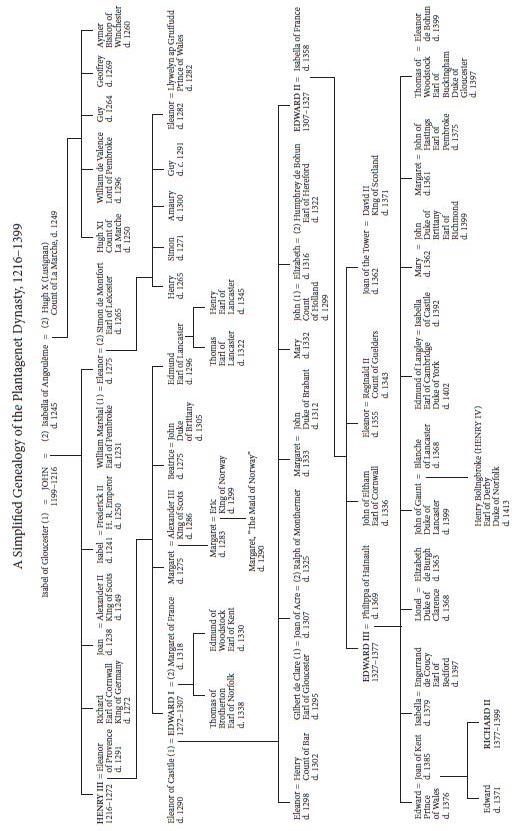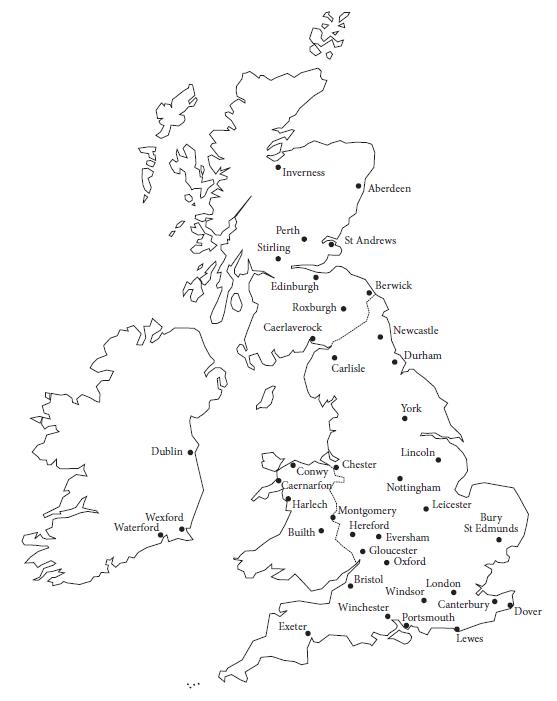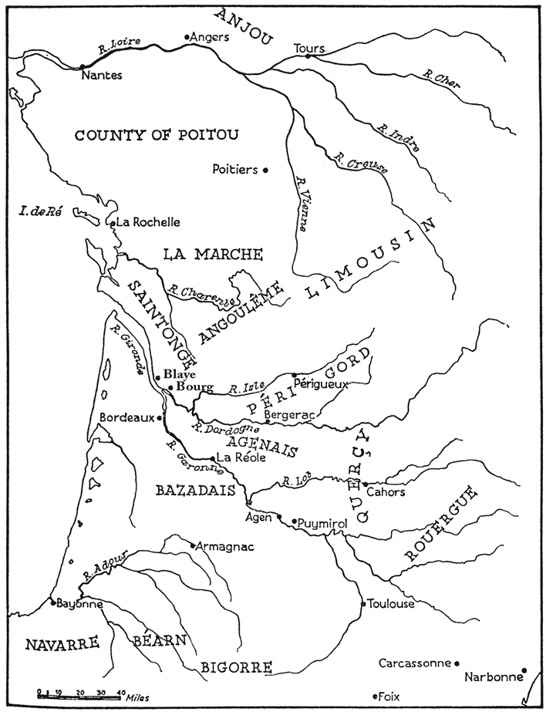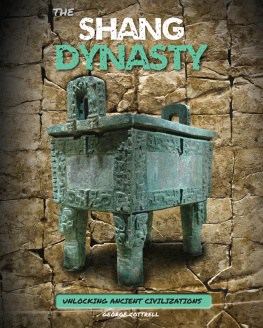J.S. Hamilton - The Plantagenets: History of a Dynasty
Here you can read online J.S. Hamilton - The Plantagenets: History of a Dynasty full text of the book (entire story) in english for free. Download pdf and epub, get meaning, cover and reviews about this ebook. year: 2010, publisher: Continuum, genre: Non-fiction. Description of the work, (preface) as well as reviews are available. Best literature library LitArk.com created for fans of good reading and offers a wide selection of genres:
Romance novel
Science fiction
Adventure
Detective
Science
History
Home and family
Prose
Art
Politics
Computer
Non-fiction
Religion
Business
Children
Humor
Choose a favorite category and find really read worthwhile books. Enjoy immersion in the world of imagination, feel the emotions of the characters or learn something new for yourself, make an fascinating discovery.
- Book:The Plantagenets: History of a Dynasty
- Author:
- Publisher:Continuum
- Genre:
- Year:2010
- Rating:3 / 5
- Favourites:Add to favourites
- Your mark:
- 60
- 1
- 2
- 3
- 4
- 5
The Plantagenets: History of a Dynasty: summary, description and annotation
We offer to read an annotation, description, summary or preface (depends on what the author of the book "The Plantagenets: History of a Dynasty" wrote himself). If you haven't found the necessary information about the book — write in the comments, we will try to find it.
The Plantagenets: History of a Dynasty — read online for free the complete book (whole text) full work
Below is the text of the book, divided by pages. System saving the place of the last page read, allows you to conveniently read the book "The Plantagenets: History of a Dynasty" online for free, without having to search again every time where you left off. Put a bookmark, and you can go to the page where you finished reading at any time.
Font size:
Interval:
Bookmark:
www.continuumbooks.com
First published 2010
Printed and bound by MPG Books Ltd, Cornwall, Great Britain
Typeset by Pindar NZ, Auckland, New Zealand
British Library Cataloguing-in-Publication Data
A catalogue record for this book is available from the British Library.
ISBN: 978-1441157126
For Helen, Isla and Ewan,
in gratitude for their enduring patience,
encouragement and faith.
I am very grateful to a number of people for their support throughout the overly long period involved in the production of this book. First of all, thanks to Professor Nigel Saul for initially approaching me to undertake the Plantagenet volume in this series. His continuing encouragement and sage advice has been invaluable. I am also grateful to Martin Shepherd and Tony Morris, under whose editorial guidance the book was begun for London Books. In the later stage of production for Continuum, Ben Hayes was instrumental in pushing me forward to the fi nish line at long last. Along the way, several colleagues read and commented on earlier draft s of chapters, and I am particularly grateful to James R. King of Midwestern State University and George B. Stow of LaSalle University for their observations and advice. I am indebted to the written work of a great number of scholars of thirteenth- and fourteenth-century England, as will be clear from the bibliography at the end of the volume. Special thanks are also due to Chris Given-Wilson, Mark Ormrod, Seymour Phillips, Philip Morgan and Michael Bennett, each of whom provided suggestions, comments and encouragement at various stages of the project. Finally, I must thank Baylor University.
Support for this project was provided by a University Research Grant, and I could not have completed the book without the extraordinary eff orts of the research librarians and interlibrary loan specialists in Moody Library. My fi nal thanks go to my wife and children, to whom this book is dedicated.
JSH
Waco, Texas, October 2009
A Simplified Genealogy of the Plantagenet Dynasty, 12161399

Map 1 Plantagenet Britain

Map 2 Medieval Aquitaine

The Plantagenet dynasty derives its name from the Planta genesta, the broom plant that Geoffrey, count of Anjou, apparently used as a personal emblem.
Geoffreys son Henry II may be considered the first Plantagenet king. He and his sons Richard I and John, however, are more commonly referred to as the Angevins, as they continued to control a cross-channel empire that stretched from the Pyrenees to the borders of Scotland. For the purposes of this study, the Plantagenet dynasty will be taken to refer to the five kings from Henry III to Richard II who ruled England from 1216 until 1399, when Richard II was deposed by his cousin Henry Bolingbroke, who established the Lancastrian dynasty as Henry IV. Each of the Plantagenet kings was faced with his own challenges and opportunities, yet there is a surprising degree of continuity to be found in the outlooks, attitudes and concerns of each of these kings, not least their concern for the Plantagenet dynasty itself.
Remarkably, three of the five Plantagenets came to the throne as minors: Henry III succeeded John at 9 years of age; Edward III was 14 years old when his father was deposed by his mother Isabella; and Richard II succeeded his grandfather Edward III at 10 years of age. All three of these Plantagenets would have to overcome a variety of obstacles before they were able to assert their royal authority and articulate a vision of kingship that resonated with the political elites of their day. Henry III would be assisted by such able councillors as William Marshal, Hubert de Burgh and the papal legates Guala and Pandulf. Edward III would find himself more overshadowed initially than any other of the dynasty, faced as he was by the dominating presence of Roger Mortimer, first earl of March; it required a daring coup led personally by the king and a small group of his intimate companions to liberate himself from this unwanted tutelage. Richard II would find himself in a constant struggle with members of his own family, particularly his uncles, the younger sons of Edward III, and his cousin Bolingbroke.
Every one of the Plantagenet kings would face political crises of the first order.
The political history of the thirteenth and fourteenth centuries can be regarded as a commentary on the Magna Carta, the great charter of liberties that King John had been forced to accept in 1215. This was particularly obvious in the case of Henry III, who came to the throne with a French army entrenched on English soil and many of his magnates in open revolt. His repeated confirmation of the Magna Carta transformed it into a fundamental element in the English constitution. Throughout his reign, Henry faced baronial opposition from the 1250s, led by the mercurial Simon de Montfort and in the interplay between the king and his baronial foes, parliament began to emerge as a significant representative institution (at least in theory, if not yet always in practice).
Henrys son, Edward I, is generally regarded as a powerful, indeed masterful, king, yet he too faced a grave political crisis in 1297, when the marshal and constable the earls of Norfolk and Hereford, respectively refused to serve overseas separately from the kings own army. Edward was forced to confirm Magna Carta and the Charter of the Forest in 1297, and again in 1300, in order to restore domestic harmony, but even that might not have been enough had not the Scottish victory at Stirling Bridge shocked the aristocracy into a more cooperative frame of mind. As part of his effort to find broad-based support for taxation to fund his wars, in 1295 he summoned knights of the shire, burgesses and lower clergy to what has become known as the Model Parliament, even though such inclusiveness would not become the norm for many years to come.
Edward II, certainly the least talented of the Plantagenets, was faced with a seemingly endless series of crises from the outset of his reign. Early on, he was forced to accept the Ordinances of 1311, every bit as great a constraint on his royal prerogative and power as the Provisions of Oxford that Simon de Montfort had imposed on Henry III. The struggle for the enforcement of the Ordinances dominated the politics of the following decade. Finally liberating himself from baronial control after his defeat and destruction of the earl of Lancaster in 1322, Edward II had himself been toppled from the throne by his wife Isabella and her lover Roger Mortimer within 5 years, shortly thereafter to be deposed and almost certainly murdered.
Coming to the throne under such circumstances, the young Edward III trod cautiously for much of his reign. Having organized a successful coup against Mortimer in 1330, Edward III struggled to find his balance through the next decade, facing a political crisis largely of his own making in 13401341. It is a measure of Edwards greatness that he managed to learn from this debacle, adjusting his expectations of the ability of both his ministers and his people to raise never-ending tax revenues for his wars. For the better part of three decades after 1340, before age and circumstances finally caught up with him, Edward would rule in cooperation with his magnates, and the increasingly prominent parliament. Nevertheless, the crisis of the Good Parliament of 1376 indicated the growing confidence and assertiveness of the parliamentary commons.
Font size:
Interval:
Bookmark:
Similar books «The Plantagenets: History of a Dynasty»
Look at similar books to The Plantagenets: History of a Dynasty. We have selected literature similar in name and meaning in the hope of providing readers with more options to find new, interesting, not yet read works.
Discussion, reviews of the book The Plantagenets: History of a Dynasty and just readers' own opinions. Leave your comments, write what you think about the work, its meaning or the main characters. Specify what exactly you liked and what you didn't like, and why you think so.









